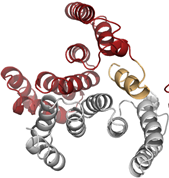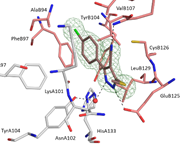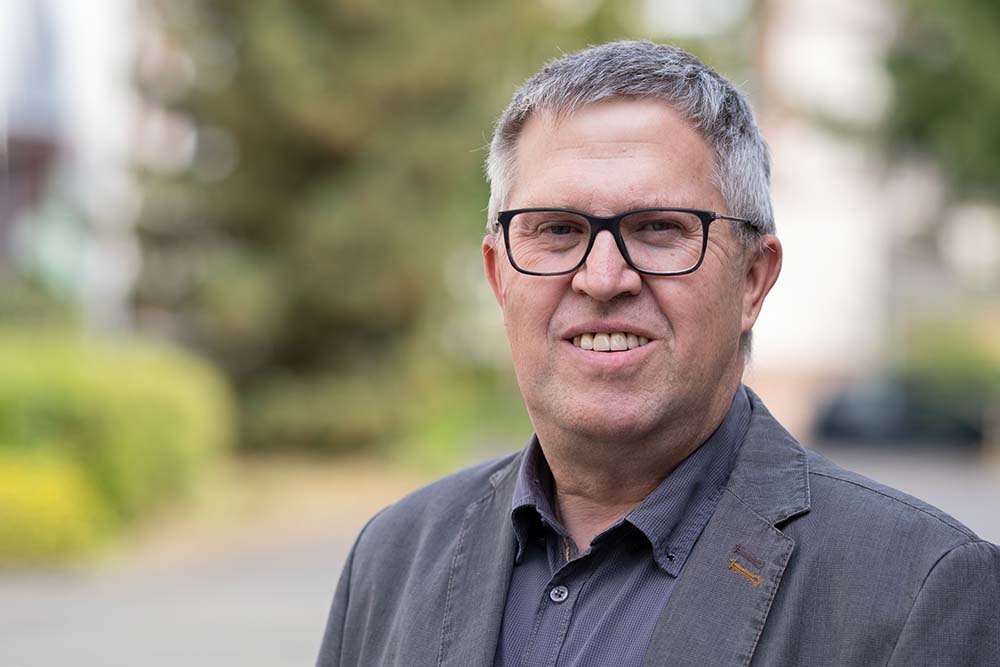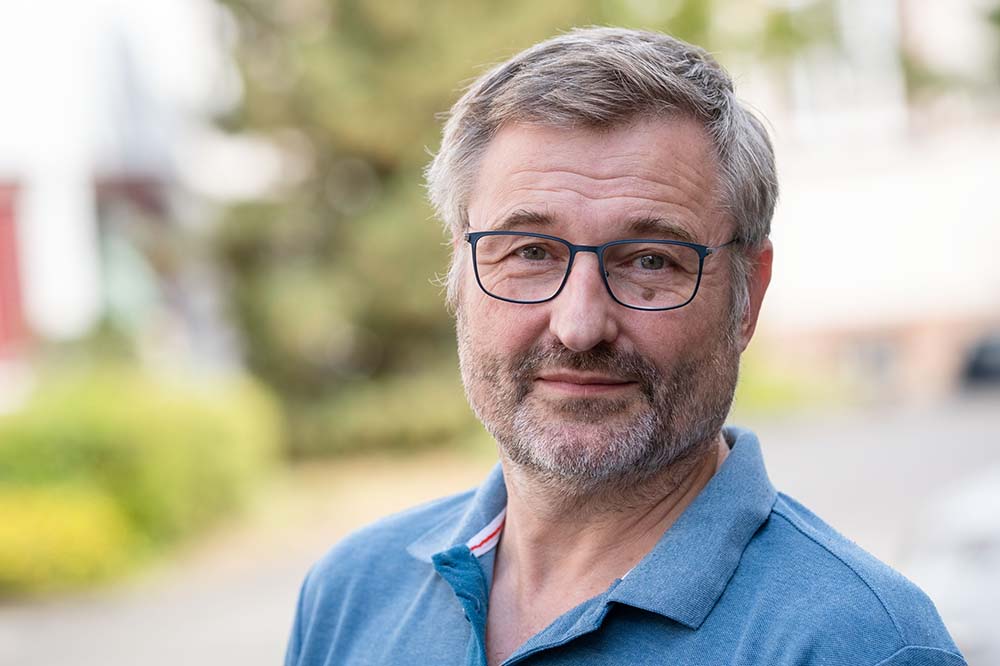A4: Search for lead structures to inhibit the chaperone IpgC from Shigella
Prof. Dr. Andreas Heine
Institut für Pharmazeutische Chemie
Marbacher Weg 6
35032 Marburg
Tel.: +49 (0)6421-28 21313
Fax: +49 (0)6421-28 28994
E-Mail: heinea(at)staff.uni-marburg(dot)de
Prof. Dr. Klaus Reuter
Institut für Pharmazeutische Chemie
Philipps-Universität Marburg
Marbacher Weg 6
35032 Marburg
Tel.: +49 (0)6421-28 25845
Fax: +49 (0)6421-28 28994
E-Mail: reuterk(at)staff.uni-marburg(dot)de
Project description
Bacteria of the genus Shigella invade the epithelial cells of the colon, which results in the severe inflammation of the large intestine. Known as bacterial dysentery or Shigellosis, this causes a large number of deaths, foremost in developing countries. The Shigella specific chaperone IpgC interacts with numerous further pathogenicity factors and is prerequisite for the virulence of this organism. In the absence of a “substrate protein”, IpgC forms a homodimer, which is essential for its stability. We use IpgC as a target protein for the structure-based design of compounds against Shigellosis by preventing IpgC homodimer formation and/or binding to substrate proteins. By now, we have established a protocol which reproducibly yields excellently diffracting IpgC crystals. Using a fragment-based approach, we have identified a number of IpgC “binders”, some of which we were able to expand significantly. In addition to protein crystallography, we use “Microscale Thermophoresis”, Isothermal Titration Calorimetry” and a “Thermal Shift” assay to study the influence of such molecules on homodimer formation, on the ability to interact with “substrates” and on stability.

Crystal struc-ture of ho-modimeric IpgC. ©Klaus Reuter

“Follow up” compound bound to IpgC. ©Marina Gardonyi
Scientific goal:
In addition to further structural information on IpgC, our main goal is the optimization of the compounds identified so far using them as lead structures in the development of anti-Shigellosis compounds.
DRUID Collaboration partners:
A1 Stephan Becker, B1 Wibke Diederich / Peter Kolb, B7 Franco Falcone, D1 Eva Friebertshäuser / Torsten Steinmetzer
References A4: [1] Agerberth et al. (2005) World Health Organ [2] Williams & Berkley (2018) Paediatr Int Child Health 38:50-65. [3] Sansonetti (2001) Am J Physiol Liver Physiol 280:319-323. [4] Parsot et al. (2003) Curr Opin Microbiol 6:7-14. [5] Lunelli et al. (2009) Proc Natl Acad Sci USA 106:9661-9666.


